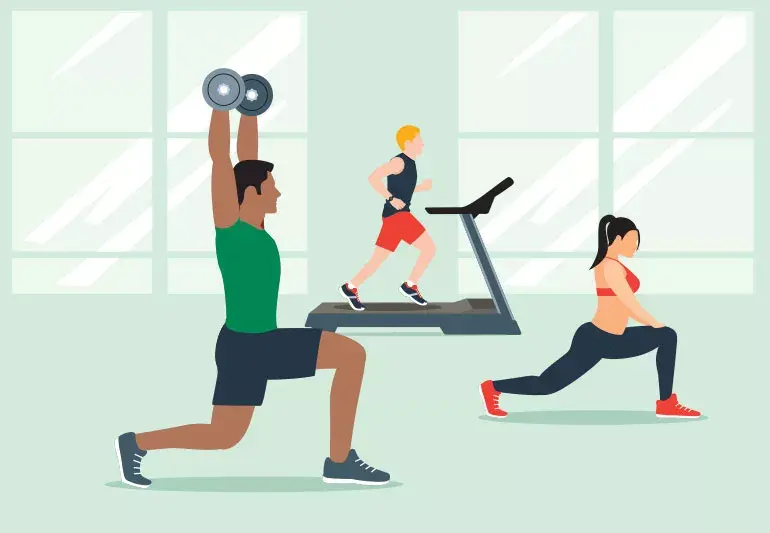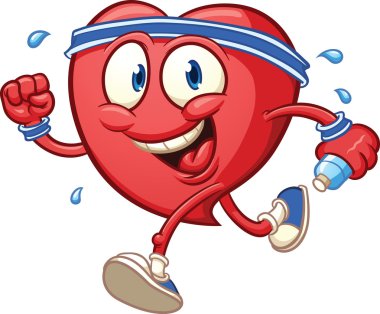Exercises That Can Lower Your Cholesterol.

There are many physical activities that you can engage in depending on your age or circumstances that will help you reduce your cholesterol. People often ask questions like how does exercising help lower cholesterol? Or does exercising lower cholesterol? What is the best exercise to lower cholesterol? Does walking and working out lower cholesterol? No worries. I have put together a list of physical activities that you can exercise daily, typically 20 to 30 minutes a day, as recommended by doctors and experts in the related field. As long as you do these exercises regularly throughout the weeks to up to 3 months, you will notice the difference right away. Keep in mind that doing these physical activities alone won’t get your low-density lipoprotein (LDL) down. You have to follow my other tips on this website, such as the healthy diet. What we put into our bodies ultimately determines our good or bad health. When engaging in physical activities for good health, it’s imperative to exclude the usage of cigarettes or any type of smoking and limit the usage of alcohol. Studies have reported that the usage of alcohol can cause damage to your liver, and since the liver is the organ that digests and processes the food we eat. I highly recommend keeping the liver as healthy as you can by avoiding the excessive use of alcohol. Smoking can cause lung cancer, but in these particular reason is that smoking does travel from your lungs into your cardiovascular system. This thickening in your blood vessels creates blood clogs. No smoking while doing these exercises is crucial for quicker result!
Here is a list of physical activities you can try to raise your high-density lipoprotein (HDL) while lower your (LDL)
Aerobic (Cardio) Exercises
- Brisk Walking – A low-impact but effective way to improve cholesterol levels.
- Jogging or Running – Helps raise HDL (“good” cholesterol) and lower LDL (“bad” cholesterol).
- Cycling – Improves heart health and boosts metabolism, aiding in cholesterol management.
- Swimming – A full-body workout that enhances cardiovascular fitness and lowers LDL levels.
- Jump Rope – A high-intensity exercise that burns fat and improves heart health.
- Dancing – Engages the whole body, increasing HDL and improving circulation.
- Rowing – Strengthens muscles while providing an intense cardio workout.
Strength Training Exercises
- Weightlifting – Builds muscle, which helps burn more fat and lower cholesterol.
- Bodyweight Exercises (Push-ups, Squats, Lunges, Planks) – Improves metabolism and cardiovascular health.
- Resistance Band Training – Strengthens muscles while enhancing circulation and fat metabolism.
High-Intensity Interval Training (HIIT)
- Sprint Intervals – Alternating between high-intensity sprints and rest periods boosts heart health.
- Jump Squats & Burpees – Increase fat-burning, which can lower cholesterol levels.
- Kettlebell Swings – A full-body movement that increases heart rate and helps reduce bad cholesterol.
Yoga & Low-Impact Exercises
- Yoga – Reduces stress, lowers inflammation, and improves cholesterol balance.
- Pilates – Strengthens core muscles while improving circulation and metabolism.
- Tai Chi – Gentle movements that promote cardiovascular health and reduce cholesterol-related risks.
Lifestyle Activities That Count
- Hiking – A great way to combine exercise with outdoor activity for heart health.
- Gardening – Surprisingly effective for increasing physical activity and lowering cholesterol.
- Playing Sports (Tennis, Basketball, Soccer) – Keeps the body active and improves cholesterol levels
Regular physical exercise is a proven and effective way to lower cholesterol levels and improve cardiovascular health. Does exercising lower cholesterol? Exercise plays a key role in balancing low-density lipoprotein (LDL), often referred to as “bad cholesterol,” and high-density lipoprotein (HDL), known as “good cholesterol.” Aerobic activities such as walking, jogging, cycling, and swimming are particularly effective in increasing HDL levels, which are responsible for transporting cholesterol away from the arteries and back to the liver for processing and elimination. In addition, exercise can reduce LDL cholesterol and triglyceride levels by enhancing the body’s metabolism and promoting the breakdown of fats through improved enzyme function. What is the best exercise to lower cholesterol? While a variety of physical activities can be beneficial, moderate-to-vigorous aerobic exercises, such as brisk walking, running, or cycling, have been found to yield the most significant improvements in cholesterol levels. Strength training and high-intensity interval training (HIIT) also contribute to better lipid profiles by reducing body fat and improving overall fitness.
Conclusion/ More tips on staying healthy!
Maintaining a healthy weight and managing stress levels also play an important role in cholesterol regulation. Excess body weight, especially around the abdomen, is associated with higher LDL cholesterol and lower HDL cholesterol. Adopting portion control, mindful eating, and staying hydrated can help manage weight effectively. Additionally, chronic stress can negatively impact cholesterol levels by increasing cortisol production, leading to higher LDL and triglyceride levels. Engaging in stress-relief activities such as meditation, yoga, deep breathing, and hobbies can help maintain a balanced and healthy lifestyle.

Adding physical activity, even in short intervals several times a day, can help you begin to lose weight. Consider:
- Daily walk during your free time, once or twice a day.
- Riding a bike to places a few days a week.
- Running on the treadmill is good for healthy heart.
- Dancing in the living room is also a good exercise.